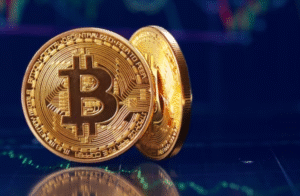$SPX $DJIA $BTC
#Trump #Markets #StockMarket #Investing #Economy #WallStreet #Finance #Crypto #Blockchain #Trading #EconomicPolicy #WhiteHouse
Donald Trump’s influence on financial markets began long before he was inaugurated as President of the United States. His campaigning rhetoric, policy proposals, and inflammatory statements consistently caught the market’s attention and affected investor sentiment. Given his emphasis on deregulation, tax cuts, and significant fiscal stimulus, industries such as energy, banking, and industrials rallied sharply after his election victory. The promise of infrastructure spending and corporate tax reform sent equities soaring, particularly in sectors that stood to benefit from pro-business policies. This phenomenon underscored a peculiar reality—that the markets were already reacting to policy promises rather than actual legislation or execution, effectively pricing in Trump’s “America First” agenda ahead of time.
The broader market, as represented by major indices like the $SPX and $DJIA, witnessed a meteoric rise during the post-election period, widely referred to as the “Trump bump.” Expectations of aggressive economic policy changes, higher interest rates, and reduced regulation gave cyclically sensitive stocks, such as financials and energy companies, a major boost. Concurrently, investors rotated out of traditionally defensive sectors such as utilities and consumer staples. The reaction was swift and largely positive in U.S. equities, but the bond market exhibited a counter-trend, with treasury yields spiking sharply in anticipation of inflationary pressures tied to Trump’s policies. This turn of events highlighted just how interconnected financial instruments and investor expectations are in a politically charged environment.
However, Trump’s polarizing approach to policymaking also introduced significant risks and uncertainties, particularly for international markets. The promise of trade disputes, potential tariffs on Chinese imports, and the withdrawal from multilateral agreements like the Trans-Pacific Partnership had global investors bracing for impacts. Emerging markets, highly exposed to U.S. trade decisions and a strengthening dollar, experienced declines as Trump’s rhetoric around protectionism took center stage. Currencies of export-dependent countries weakened, while commodities like oil and metals had a mixed performance, depending on their specific exposure to Trump’s energy policies. This bifurcation between domestic market rallying and international volatility underscored the intricate tradeoffs wrought by sweeping political changes.
Looking ahead, the sentiment built during Trump’s presidential campaign serves as a compelling example of how preemptive pricing works in modern financial markets. Short of any hard data on actual policy effectiveness, markets often rely on narrative and expectation to guide valuations, sometimes holding inflated positions in the absence of tangible results. Still, there were signs even prior to his inauguration that investors remained cautious about the long-term viability of his promises. Any delay or deviation in delivering tax reform and infrastructure promises could lead to re-pricing and increased volatility. In essence, for better or worse, Trump’s policies and personality shaped a market environment driven as much by psychology as by fundamentals—proof that politics and markets are tightly intertwined in today’s global economy.







Comments are closed.